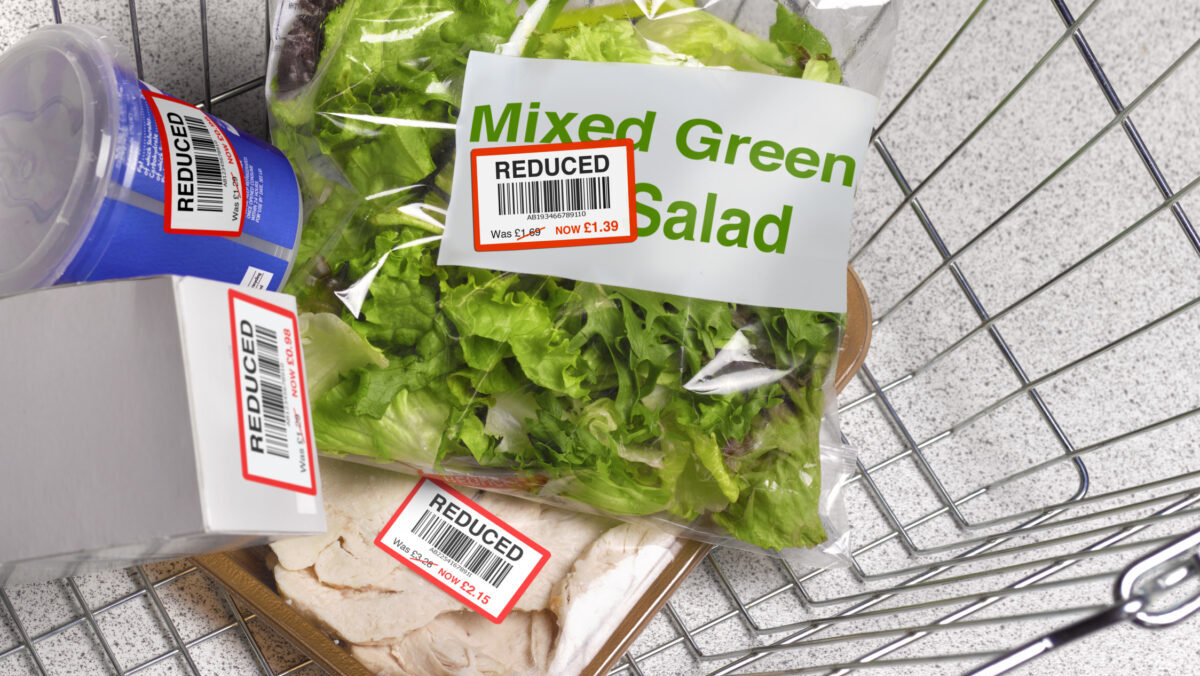Critical minerals producers in WA are under siege amid low prices for lithium, nickel, cobalt and platinum group metals
Chalice Mining’s Alex Dorsch says palladium prices must go higher ‘in the near term’ and says nickel prices that have brought WA’s miners to their knees are unsustainable
Liontown Resources saw a debt deal fall over yesterday, while Wyloo Metals and BHP will shutter Kambalda’s nickel industry
The boss of WA nickel and PGE hopeful Chalice Mining (ASX:CHN) — which will reduce its costs by 40% this year to preserve its $112 million cash pile — says global automotive manufacturing would need to collapse to support commodity prices which are knocking Australian suppliers out of the market in a battery metals bloodbath.
Alex Dorsch, whose company will reduce spending from $5m to $3m a month after a six-fold fall in its market cap, says prices across the key commodities at its Gonneville deposit near Perth were ‘unsustainable’ at current levels.
A retail investors dream when it was discovered just 70km north-east of Perth on ground never thought to be prospective for its mineral wealth, the large accumulation of palladium, platinum, gold, nickel, copper and cobalt has lost its lustre amid a price collapse that has echoed the turmoil hitting WA’s previously indomitable lithium industry.
Currently around 55% of future revenues would come from palladium and 24% from nickel, metals used alternatively in emissions efficiency systems in internal combustion engine vehicles and lithium-ion batteries for high-end electric vehicles.
But palladium prices are currently under US$950/oz — well shy of all time highs of almost US$3000/oz seen in early 2022 — and WA nickel mines are shutting on masse after a rush of supply from Indonesia hammered down prices flying only 18 months ago.
“Palladium is at something like the 50th percentile of the cost curve,” Dorsch said.
“You can’t basically have a palladium price less than US$1500 or even US$1600/oz to sustain the level of new car manufacturing going on at the moment.
“Or suspicion is the EV sales might be soft for a little while and that’s probably going to keep the nickel and lithium sentiment low.
“But we have to see a rebound in the palladium price because otherwise the market is effectively saying or forecasting that there’s a complete collapse in new vehicle sales.”
Nickel in dire straits
Wyloo Metals announced plans to place its Kambalda operations in mothballs on Monday less than a year after the Andrew Forrest investment vehicle splurged $760 million on the assets.
It will keep around 44 in-house staff while looking to reposition around 200 contractors in Forrest’s 37% owned iron ore giant Fortescue (ASX:FMG). It will also see around 20 staff lose their jobs when part of BHP’s Kambalda concentrator is shut.
Wyloo was its only supplier of raw nickel ore, while the plant also conducts blending and drying of concentrate from IGO’s short life Nova and Forrestania nickel operations.
Panoramic Resources (ASX:PAN) shut its high cost Savannah nickel operations in the Kimberley after entering administration, with First Quantum and POSCO curbing a third of the 420 strong workforce at their Ravensthorpe nickel mine, where mining will cease and stockpiles will form feed for a downsized operation in the next three years.
The only other operating nickel mines in WA are Glencore’s Murrin Murrin nickel and cobalt laterite project near Laverton and BHP’s northern operations, including the Mt Keith and Leinster mines and concentrators.
But BHP has already flagged cost cutting and impairments in its quarter report, raising questions over a smelter rebuild in Kalgoorlie that would cost hundreds of millions.
In early 2022 a short squeeze, Russia’s invasion of Ukraine and rising demand for ‘class 1 nickel’ from battery and EV makers sent nickel prices sky high, briefly approaching the all time highs of more than US$50,000/t they only scaled at the onset of China’s infrastructure boom in 2007.
At the start of 2023, helped by Covid impacts in Indonesia, prices were still around US$30,000/t. Now they are trading around US$16,000/t, with Indonesia’s share of global nickel production surging from 30% to 55% in just three years.
ANZ’s Daniel Hynes and Soni Kumari predicted in a note last week the country’s output would lift as much as 8% to 2.2Mt this year. That’s around two-thirds of global production.
Western carmakers …
Chalice’s fall from market darling status was prompted last year by a savage response to its initial Gonneville scoping study.
In particular, capital costs involved with mining a large, low grade deposit, uncertainty over its processing route and commodity price forecasts that sat well above spot prices came under criticism from investors.
A nickel price deck used in the study came in at US$24,000/t, around a third above current prices, while palladium prices of US$2000/oz used in the study would be more than double current rates.
Suggestions western carmakers would pay a green or western premium at the moment appear illusory. Calls for them have been criticised by ASX-listed Indo-nickel producer Nickel Industries (ASX:NIC), which has said it is in discussions with a number of OEMs over supply from its emerging HPAL and nickel matte operations in the South-East Asian nation, which until recently produced “class 2” nickel pig iron — only good for lower quality stainless steel.
Forrest lieutenant Luca Giacovazzi, the head of Wyloo, yesterday accused Indonesia of flooding the world with ‘polluting nickel’, a claim that Australian nickel sulphides are produced at a far lower carbon intensity than energy hungry, coal powered operations in Sulawesi’s industrial plants.
It is also largely funded by Chinese companies like Tsingshan, a major shareholder in NIC, leading to concerns the idling of western mines could allow China to corner the market and set prices.
“The difficulty is that Western carmakers can’t make a cost competitive EV to compete against Chinese BEVs today,” Dorsch said.
“So they can’t tolerate paying a green premium because they’re already non-competitive.”
Instead he said Western players who couldn’t utilise Indonesian nickel would lock up supply by backing nickel sulphide deposits via offtake deals and direct investments, pointing to strategic investments from Samsung and Sumitomo in Canadian nickel juniors.
While he thinks it will be in the doldrums longer than palladium, Dorsch said it was nonsensical for nickel prices to stay at a level where even many Indonesian producers were seeing profit margins squeezed.
“The idea that nickel is sustained at US$16,000/t is just nonsensical because the industry needs to see circa US$20,000/t plus or around about that number to sustain production and certainly, Western consumers of nickel aren’t just going to be happy with China and Indonesia effectively cornering the market,” he said.
Gonneville rethink
Chalice is rebasing Gonneville, looking at plans that will see it stockpile lower grade oxide material and access a high grade core with lower capital costs and material movements after investors baulked at the $1.6-2.3b capex estimate in last year’s scoping study.
A PFS is due by mid-2025, with other studies also progressing ahead of a planned 2026 FID.
A process to find a strategic partner to take a stake in the asset is also ongoing.
Iron ore mogul Gina Rinehart’s Hancock Prospecting, which made a string of major investments in lithium explorers across 2023, remains a large sub-5% shareholder at Chalice.
While it now seems like last year’s mad M&A rush to secure stakes in junior lithium explorers could have been a sign of the top of the cycle, Dorsch said the actions of billionaires like Rinehart and Chris Ellison as well as Korean and Japanese OEMs and trading houses showed big players with a long-term horizon remained bullish on energy transition metals.
Lithium in limbo
A similar story is playing out in lithium, where one of the objects of Rinehart’s affections last year — Liontown Resources (ASX:LTR) has gone from Annus Mirabilis to Annus Horibilis in astonishing time.
Rinehart’s $1.3 billion purchase of a near 20% stake near the $3 offer price famously killed a $6.6 billion bid from US lithium giant Albemarle.
Liontown then arranged a $376 million equity raising at $1.80 and $760 million of debt from the big four banks, Societe Generale, Export Finance Australia and Clean Energy Finance Corporation to finish its Kathleen Valley lithium mine and early works to expand the underground operation and plant from 3Mtpa to 4Mtpa.
The mine is still slated to produce first spodumene concentrate in mid-2024. But that expansion will now be deferred after the debt funding fell over on the back of a 60% drop in medium term lithium forecasts from Wood Mackenzie.
They now have prices in the US$950/t range for 6% Li2O concentrate from 2027-2029 after spot prices tumbled on oversupply prompted by expansions in Australia and the Americas and new supply from Africa and lepidolite mines in China sent prices over 80% lower to under US$1000/t last year.
That has already seen Core Lithium (ASX:CXO) cease mining at the Finniss project in the Northern Territory and could put the microscope over expansions planned by the Greenbushes consortium, Pilbara Minerals (ASX:PLS), Mineral Resources (ASX:MIN) and Arcadium Lithium (ASX:LTM).
Liontown MD Tony Ottaviano told analysts yesterday the miner had a different view on the medium term price forecasts, which if realised would have put its capacity to repay a debt of that magnitude under stress.
“They’re expecting significant supply to come on from Africa and the lepidolite supply in China to stay sticky and there’s all this organic growth coming from existing players,” he said.
“Now our view is the pricing signals that they’re forecasting, by definition, would mean that some of that supply just will not come on. That’s why we differ in our perspective. But WoodMac has a different view.”
In an announcement late yesterday the Federal and WA resources ministers Madeleine King and David Michael said they would meet with nickel and lithium companies along with CME, AMEC, unions and the Minerals Council in Perth on Thursday to address the mayhem.
“Lithium and nickel are both crucial to the energy transition as we decarbonise. The mining of these resources supports many local jobs,” King said.
“Commodities traditionally go through natural and cyclical boom and bust cycles, but the potential prolonged impact this could have on Australia’s energy transition, local workforce and development of Australia’s minerals sector is a matter of great concern.”
Albemarle also announced last week that it would halt the construction of the last of four 25,000t lithium hydroxide trains in the works at its Kemerton refinery near Bunbury as part of a string of capex and operational savings expected to tally US$750m.
The post Something must give as “unsustainable prices” hit energy transition metals: Chalice appeared first on Stockhead.























+ There are no comments
Add yours